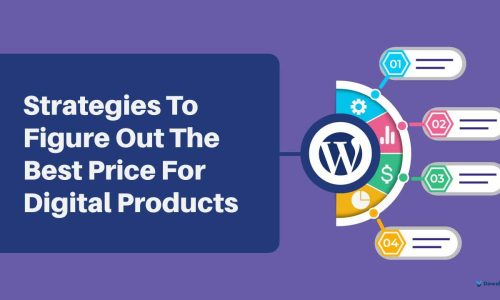Why Mobile Optimization Is Important For Your eCommerce Website?
With the proliferation of smartphones and tablets, consumers increasingly rely on their mobile devices to browse, research, and make purchases. So it’s necessary to make your eCommerce website mobile optimized.
This article delves into the pivotal reasons why mobile optimization is paramount for your eCommerce website’s success. Understanding the profound impact of catering to the needs and preferences of mobile consumers empowers you. It enables you to harness the full potential of your eCommerce platform and thrive in today’s dynamic marketplace.
What is Mobile Optimization?

Mobile optimization refers to the process of designing and adapting websites, applications, or online content to ensure optimal functionality and usability on mobile devices, such as smartphones and tablets. This optimization involves creating responsive designs, adjusting layout and content to fit smaller screens, optimizing loading times, and implementing mobile-friendly navigation and interactions. The goal of mobile optimization is to provide users with a seamless and enjoyable experience. By providing this you can ultimately improve engagement, user satisfaction, and overall performance.
Benefits of Mobile Optimization for eCommerce Website:
Mobile optimization is essential for businesses striving to stay competitive in the modern digital landscape. Below are the key advantages of prioritizing mobile optimization:
Improved User Experience:
A website tailored for mobile devices enhances the user experience for customers. Such sites are specifically crafted to suit the smaller screens of mobile devices, facilitating easier navigation and interaction. Mobile-optimized websites boast faster loading times, concise content, and a seamless checkout process, which collectively enhance the user experience. This improvement can lead to heightened customer satisfaction and a subsequent boost in sales.
Higher Search Engine Ranking:
Mobile optimization plays a crucial role in search engine rankings. In 2015, Google announced its preference for mobile-friendly sites in search engine rankings. Utilizing Google’s Mobile-Friendly Test tool allows for a rapid evaluation of a site’s mobile-friendliness. Websites that pass this test stand a better chance of ranking higher in search engine results pages (SERPs). With search engines placing growing importance on mobile optimization, e-commerce businesses that prioritize this aspect are positioned to attain higher rankings and draw increased traffic to their websites.
Higher Conversion Rates:
Mobile optimization can significantly boost conversions for e-commerce websites. A site optimized for mobile devices simplifies the browsing and purchasing process, resulting in higher conversion rates. According to Google, mobile-optimized sites enjoy a 62% higher conversion rate compared to non-optimized ones. By prioritizing mobile optimization, e-commerce enterprises enhance their ability to convert mobile visitors into customers.
In summary, mobile optimization is indispensable in today’s digital era of e-commerce. With the surge in mobile usage and the growing preference for mobile shopping, prioritizing mobile optimization is crucial for maintaining competitiveness. By delivering an improved user experience, enhancing search engine rankings, gaining a competitive edge, and boosting conversions, e-commerce businesses can leverage the advantages of mobile optimization to thrive in the online marketplace.
Improves Cross-Device Consistency:
In today’s digital landscape, customers often switch between multiple devices during their purchasing journey. They might initiate the process on one device and finalize it on another. Mobile optimization plays a critical role in ensuring a consistent and smooth experience across different devices, thereby fostering brand loyalty.
A user who encounters consistency and reliability in their experience on both desktop and mobile platforms is more inclined to become a loyal customer, returning for future purchases.
Timely resolution of performance issues is essential. Doing so not only prevents user frustration but also enhances the efficiency of the website. It helps retain visitors who might otherwise abandon the site in favor of competitors.
Better SEO:
Mobile optimization and search engine optimization (SEO) are closely intertwined. A website that is optimized for mobile devices not only caters to the preferences of contemporary users but also enhances its SEO prospects.
With the continuous surge in mobile usage, adapting and optimizing e-commerce platforms for mobile users has become imperative.
Search engines tend to prioritize mobile-friendly websites, thereby positively influencing their search rankings. By prioritizing mobile optimization, businesses can capitalize on substantial growth opportunities and avoid losing valuable customers to competitors who prioritize the mobile user experience.
Reduces Bounce Rates:
Websites that are unresponsive and slow to load often experience elevated bounce rates, where visitors quickly exit the site after arrival. Mobile optimization significantly mitigates bounce rates by ensuring users can effortlessly access desired information and complete transactions without encountering frustration. A diminished bounce rate signifies heightened user engagement and value perception within the online store, thereby bolstering overall business prosperity.
Boosts Brand Image:
Mobile optimization has the added benefit of elevating the brand image of e-commerce businesses. A meticulously crafted, mobile-friendly website communicates professionalism, meticulous attention to detail, and a dedication to delivering a seamless user experience. Conversely, a website that is poorly designed and lacks optimization may project an image of unprofessionalism and disregard for the customer experience, which could detrimentally impact the brand’s reputation.
Increases Accessibility:
Mobile optimization further enhances the accessibility of e-commerce websites. Given the ubiquity of mobile devices, consumers can conveniently engage with e-commerce platforms anytime and anywhere, even when desktop access is limited. Moreover, mobile optimization facilitates accessibility for individuals with disabilities, including those with visual impairments or mobility challenges, through features like voice-activated search and screen readers. This inclusive approach ensures that a broader range of users can fully participate in the e-commerce experience.
Increased Mobile Traffic:
As per Statista’s projections, the global mobile device user base is anticipated to reach 7.33 billion by 2023. This surge isn’t confined to social media engagement or web browsing; mobile devices have become integral to the online shopping journey. A study by eMarketer revealed that mobile devices contributed to more than 50% of total e-commerce sales in 2020. Given this significant shift, optimizing user experience for mobile devices is imperative for e-commerce platforms.
Cost-Effective:
Mobile optimization presents a cost-effective avenue for businesses to enhance their online presence. By optimizing their website or application for mobile devices, businesses can expand their reach, elevate engagement and conversions, and enhance customer satisfaction, all without the need for hefty investments in marketing campaigns.
Mobile Optimization Best Practice for eCommerce Website:
To ensure optimal performance on mobile devices, follow these steps for effective optimization:
Responsive Design: Implement a design that adjusts seamlessly to different screen sizes and resolutions, guaranteeing an optimal viewing experience across all devices.
Simplified Navigation: Keep navigation straightforward with clear menus, dropdowns, and intuitive icons, facilitating easy browsing for users.
Streamlined Design: Eliminate clutter and unnecessary elements from your website’s design, ensuring a clean layout that is conducive to mobile viewing.
Image and Video Optimization: Optimize media files to enhance loading speed and prevent user frustration, thereby improving search engine rankings.
Text-to-Image Ratio: Strike a balance between text and images, prioritizing readability with appropriate font sizes, spacing, and strategic use of white space.
Minimized Page Load Times: Improve loading speed by optimizing code, compressing images, and minimizing the use of large multimedia files.
Mobile-Friendly Forms: Create forms optimized for mobile devices, featuring clear instructions, user-friendly input fields, and compatible keyboard layouts.
Simplified Checkout: Streamline the checkout process for mobile users to minimize cart abandonment and enhance conversion rates.
Speed Prioritization: Focus on fast loading times to meet mobile users’ expectations, utilizing tools like Google’s PageSpeed Insights for optimization.
Voice Search Optimization: Adapt your website for voice search to enhance search engine visibility and attract traffic from mobile users using voice assistants.
Compatibility Assurance: Ensure compatibility with all major mobile devices and browsers, including Android, iOS, and Windows platforms.
Cross-Device Testing: Thoroughly test your website across various devices, including smartphones and tablets, to identify and resolve any compatibility issues, ensuring a consistent user experience for all visitors.
Conclusion:
In summary, the criticality of mobile optimization for the prosperity of an eCommerce website in today’s digital landscape is indisputable. Websites optimized for mobile devices not only secure higher rankings in search engine results but also provide customers with seamless experiences, thereby enhancing engagement levels. Business owners must prioritize the development of user-friendly mobile designs and leverage strategies like personalization and targeted advertising to fully capitalize on mobile optimization benefits. Additionally, regular monitoring of website performance is essential, enabling businesses to make necessary adjustments and continually optimize their platforms to attract traffic from diverse sources. By adhering to these principles, businesses can establish and sustain a thriving e-commerce presence through effective mobile optimization strategies.
For more articles, check our Blog page. Also, don’t forget to subscribe to our YouTube channel and follow our Facebook page.









